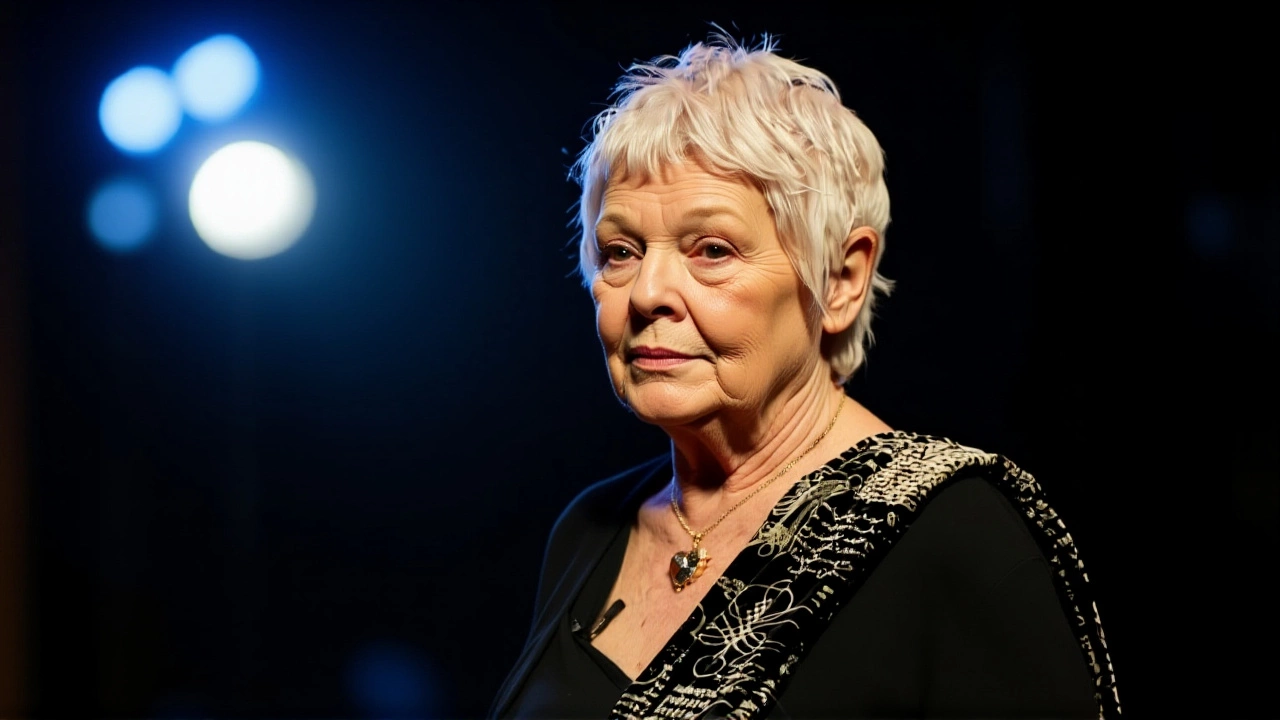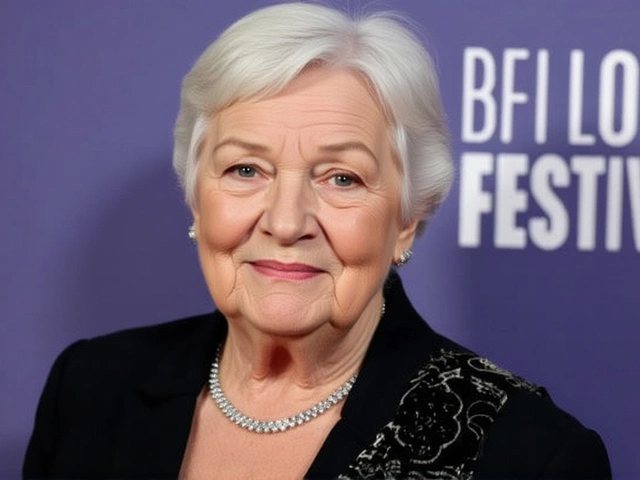Dame Judi Dench Reveals Vision Loss, Becomes Patron of Yorkshire Macular Degeneration Fund

When Dame Judi Dench stepped onto the stage at the University of York on October 1, 2024, to accept her new role as Patron of the Yorkshire Macular Degeneration Fund, she didn’t just take on a title—she shared a deeply personal truth. At 89, the Oscar-winning actress, famed for her role as M in seventeen James Bond films and her Academy Award-winning performance in Shakespeare in Love, revealed she can no longer watch television or see live theater. Her vision, once sharp enough to convey centuries of Shakespearean nuance, has been eroded by age-related macular degeneration (AMD). It’s a quiet, devastating loss for an artist whose life was built on seeing—and being seen.
Why Yorkshire? The Hidden Epidemic in Northern England
The Yorkshire Macular Degeneration Fund was launched in October 2023 by the University of York in partnership with Hull York Medical School (HYMS). Its mission: to tackle a disease that affects roughly 700,000 older adults across the UK—but hits Yorkshire and the Humber harder than anywhere else. A 2023 government report found AMD and glaucoma rates in this region were significantly elevated compared to the national average. That’s not coincidence. It’s a public health signal.“We saw a gap,” said Ashley Burgess OBE, the Fund’s founding donor. “People in Yorkshire were losing their sight faster, and research funding wasn’t keeping pace. This wasn’t just about science—it was about justice.”
A Star’s Silent Struggle
Dame Judi Dench’s career has been defined by presence. From the Royal Shakespeare Company to the Bond franchise, her eyes—expressive, piercing, unforgettable—were her instrument. Now, she relies on audio descriptions and trusted friends to recount the plot of a play. She can’t read scripts anymore. She can’t recognize faces in the front row.“It’s not the loss of sight that breaks you,” she told attendees at the launch. “It’s the loss of connection.”
AMD attacks the macula, the central part of the retina responsible for sharp, detailed vision. It doesn’t cause total blindness—but it turns the world into a blurry, distorted core surrounded by peripheral clarity. Reading? Impossible. Driving? Dangerous. Recognizing your grandchildren? Often, no.
Wet AMD, the more aggressive form, can cause rapid deterioration. But here’s the hopeful twist: early detection can preserve vision for years. That’s where the Fund’s research comes in.

Two Researchers, One Mission
Thanks to charitable donations—amounts undisclosed, but described as “transformative”—the Fund has appointed its first two postgraduate researchers: one MSc student and one PhD candidate. Their focus? Early detection tools for wet AMD, particularly non-invasive imaging techniques that could catch the disease before irreversible damage occurs.“We’ve already seen that identifying wet AMD six months earlier can mean the difference between reading a book and never being able to hold it again,” said Professor Richard Gale, Professor of Ophthalmology at HYMS. “The technology is there. What’s missing is the funding to scale it.”
One of the researchers is developing a smartphone-based screening tool that could allow GPs to flag early signs of AMD during routine visits. Another is analyzing genetic markers linked to the higher prevalence in Yorkshire. If successful, this could lead to targeted screening programs across the region—and eventually, nationwide.
What Happens Next?
The Fund has two major events planned for October 13–14, 2025, in York. Though details are still under wraps, insiders say they’ll include a public symposium on vision health and a showcase of the researchers’ preliminary findings. There’s talk of partnering with the NHS to pilot the screening tool in five Yorkshire clinics.Meanwhile, Dame Judi Dench’s influence is already ripple effects. Since her announcement, donations to the Fund have surged by 300%. Social media campaigns under #SeeWithJudi have trended in the UK. Her story isn’t just about AMD—it’s about dignity, resilience, and the quiet courage of turning personal loss into public good.

The Bigger Picture: Why This Matters Everywhere
AMD is the leading cause of vision loss in people over 50. By 2050, the number of people affected in the UK could top 1.5 million. Most cases go undiagnosed until it’s too late. The problem isn’t just medical—it’s societal. Older adults who lose central vision are more likely to fall, become socially isolated, or need long-term care.Yorkshire’s higher rates might be tied to genetics, diet, or even decades of industrial pollution. But the real lesson? Early detection saves sight. And sight saves independence.
“Judi Dench didn’t become a patron because she’s famous,” said one HYMS nurse who works with AMD patients. “She became one because she’s one of us. And that’s what makes people listen.”
Frequently Asked Questions
How does AMD affect daily life, and why is early detection so critical?
AMD destroys central vision, making reading, driving, and recognizing faces extremely difficult—even if peripheral vision remains intact. Wet AMD, the more aggressive form, can cause rapid vision loss within weeks if untreated. Early detection through retinal scans can halt progression in up to 90% of cases with timely injections, preserving quality of life for years. Many patients don’t notice symptoms until damage is severe, which is why routine screening is vital.
Why is AMD more common in Yorkshire and the Humber?
A 2023 government health report found AMD and glaucoma rates in Yorkshire and the Humber were 22% higher than the national average. Possible factors include genetic predisposition, higher smoking rates among older populations, and long-term exposure to air pollution from historic industrial zones. Researchers at Hull York Medical School are now studying whether specific gene variants are more prevalent in the region, which could lead to targeted prevention programs.
What role is Dame Judi Dench playing beyond being a figurehead?
Dame Judi Dench isn’t just lending her name—she’s actively participating in awareness campaigns and has personally recorded audio messages for newly diagnosed patients. Her visibility has boosted donations by 300% since October 2024. She’s also working with the Fund to develop accessible audio formats of stage scripts, helping others with AMD stay connected to theater. Her involvement turns abstract research into human stories.
Can AMD be cured, and what treatments are available?
There’s no cure for AMD yet, but wet AMD can be managed effectively with monthly anti-VEGF injections that stop abnormal blood vessel growth in the retina. These treatments, if started early, can stabilize or even improve vision in many patients. Dry AMD, the more common form, has fewer options, though supplements like AREDS2 may slow progression. The Yorkshire Fund’s research aims to find earlier diagnostic tools and new drug delivery systems to reduce treatment burden.
How can people in Yorkshire get screened for AMD?
Currently, NHS eye exams don’t routinely screen for early AMD unless symptoms are present. But the Yorkshire Macular Degeneration Fund is working with local GP surgeries to pilot a low-cost retinal imaging program for patients over 60. Starting in early 2025, people in York, Hull, and Leeds will be able to request a free, five-minute retinal scan during routine visits. The goal is to make this standard across the region by 2026.
What’s the long-term goal of the Yorkshire Macular Degeneration Fund?
The Fund’s ultimate aim is to create a national model for early AMD detection and intervention, starting in Yorkshire. By 2030, they hope to reduce late-stage AMD diagnoses in the region by 40%, cut related hospital admissions by 25%, and make retinal screening as routine as blood pressure checks. Their research could also inform global guidelines, especially in aging populations across Europe and North America.
